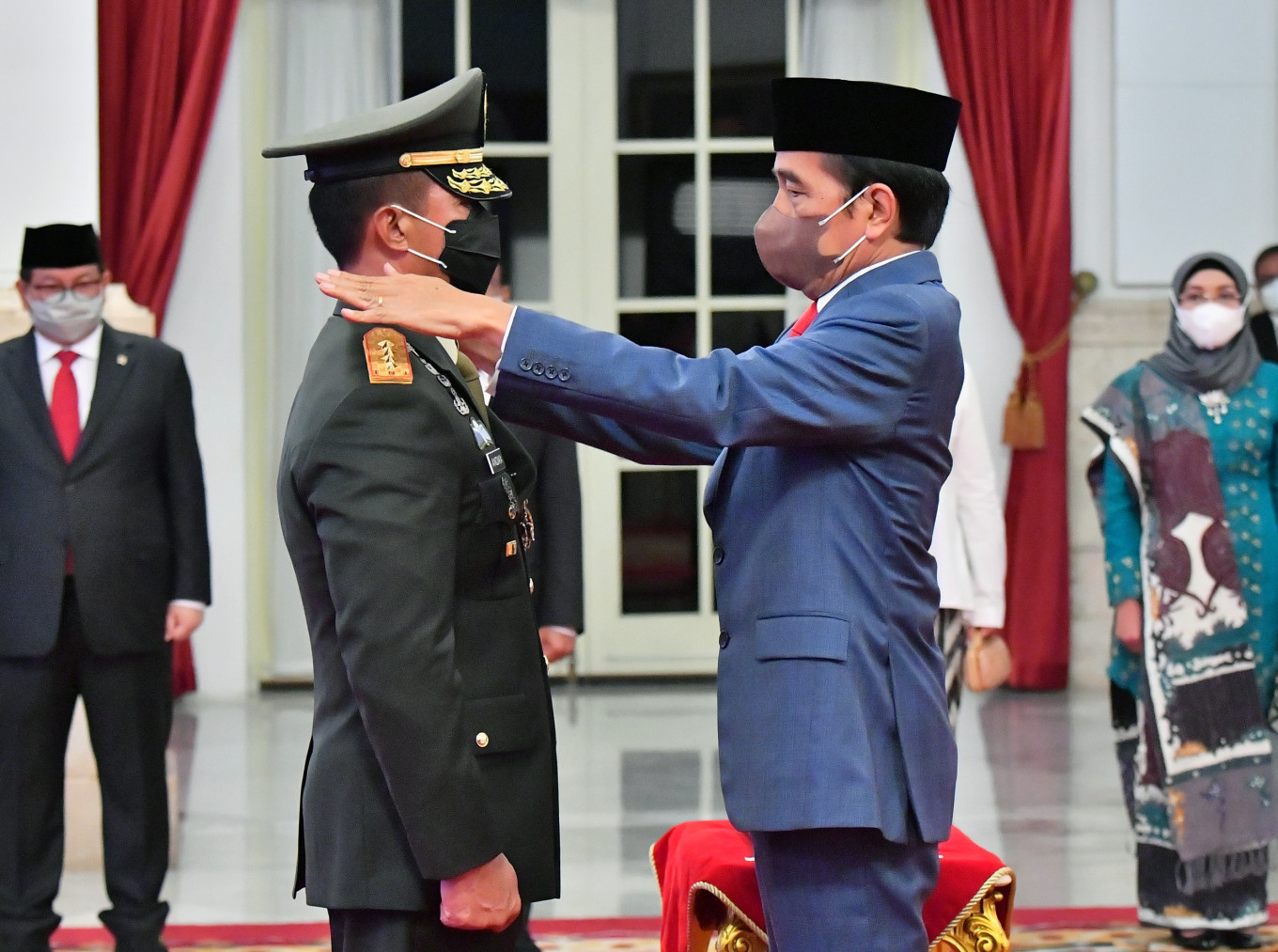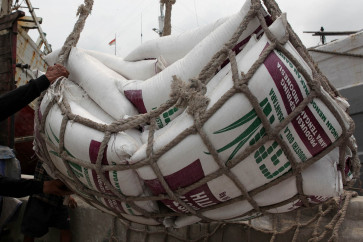Popular Reads
Top Results
Can't find what you're looking for?
View all search resultsPopular Reads
Top Results
Can't find what you're looking for?
View all search resultsGen. Andika, Indonesia's airspace is not completely in our hands
Two years after the leaders talked in Singapore, however, the realignment of Natuna FIR has not materialized.
Change text size
Gift Premium Articles
to Anyone
O
n Wednesday, Gen. Andika Perkasa assumed command of the Indonesian Military (TNI), with plenty of challenges awaiting, ranging from human rights abuses allegedly committed by soldiers in Papua to the South China Sea issue. The latter has raised concerns over the potential for great powers conflict at sea, but unfortunately the airspace over Natuna Islands has not received adequate attention.
As of today, the airspace above Natuna and Riau Islands, known as the Natuna Flight Information Region (Natuna FIR), is under Singapore’s control. In 1946, the International Civil Aviation Organization (ICAO) entrusted Singapore – then under British control – to manage air navigation services in Natuna FIR. Back then Indonesia was still struggling for independence and became an ICAO member only in 1950. Prior to the enactment of the 1982 United Nations Convention on the Law of the Sea (UNCLOS 1982), Indonesia endured the high seas doctrine that limited its airspace to the 12-mile rule. Now Indonesian airspace is seen as an integrated territory without any gap between islands thanks to the archipelagic state concept, which is internationally recognized under the UNCLOS – except for the Natuna FIR.
Efforts have been made to realign Natuna FIR from Singapore to Indonesia. Numerous Asia-Pacific Regional Air Navigation meetings have been held to address the issue, such as in Honolulu (1973), Singapore (1983) and Bangkok (1993), but to no avail.
At the presidential level, President Joko “Jokowi” Widodo’s latest visit to Singapore in 2019 addressed Indonesia’s seriousness in seeking the return of the airspace above Riau and Natuna Island.
The Indonesia-Singapore Agreement of 1995, which Indonesia ratified in 1996, is the basis of the negotiation. But without the consent of the ICAO, any agreement to hand traffic control over Natuna FIR from Singapore to Indonesia will not come into force. Setting aside the debate, the two ASEAN neighbors have agreed to work together during the realignment process.
Two years after the leaders talked in Singapore, however, the realignment of Natuna FIR has not materialized. The two countries recognize that the FIR issue is not about sovereignty, but merely safety and air traffic as well as management efficiency. The status quo as of today shows that Natuna FIR includes multidimensional issues and definitely the sovereignty matter cannot be overlooked.
The combination of aviation industry liberalization in most ASEAN member states that led to the operation of more low-cost carriers and the air liberalization through ASEAN Open Skies has given a boost to air traffic in the region. The Jakarta-Singapore route – and beyond, is among the busiest in the world. That means increased revenue for the air navigation service provider, i.e. Singapore
However, such fees are not Singapore’s primary concern. As a small country, Singapore relies for its economic lifeline on seamless connectivity for logistics, expatriates and tourism. In 2019, around 19 million international tourists – more than three times Singapore’s population – flew into the city state. The existence of Changi Airport is therefore pivotal, and logically the country shall not surrender the control of Natuna FIR to Indonesia without any guarantee Changi will keep its strategic interests intact.
The second reason for Singapore to defend the Natuna FIR status quo is to protect the Republic of Singapore Air Force’s (RSAF) designated military training area. The RSAF needs room for combat training, plus the location of a training area gives it the advantage of knowing the borders. Singapore’s control of Natuna FIR allows it to maintain its interests. However, the RSAF’s better knowledge of the borders means a potential threat to Indonesian national security.
This situation is disadvantageous for the Indonesian Air Force since its aircraft cannot move freely within its own airspace but have to report to Singapore for the sake of civil aviation safety. There has been a constant objection from Indonesia regarding this matter, which is why Singapore will try to maintain the status quo.
Government Regulation No. 4/2018 mandates the TNI chief, i.e. Gen. Andika, to set up an Air Defense Identification Zone (ADIZ). In the 1960s, during the Cold War, Indonesia established an ADIZ but only above Java Island and its surroundings. The ADIZ enactment embodies the self-defense concept as set out in Article 51 of the United Nations Charter.
Conformity with international laws should define Indonesia’s status within international civil aviation. ICAO Annex 11 stipulates that aircraft must come under the control of only one air traffic controller (ATC) at any time. A violation of the single control unit principle occurs if an aircraft is required to conduct radio contact with different national security units at the same time without mutual coordination.
Although not from the Air Force, unlike his predecessor, Gen. Andika needs to ensure Indonesia’s new ADIZ will be set up gradually until it encompasses the entire archipelago. In parallel, the Defense Ministry is drafting the bill on national airspace management. Coordination between the TNI and the ministry is paramount so that the ADIZ and air space control are designated only if Indonesia has already gained control of Natuna FIR.
The 2009 Aviation Law sets a 2024 deadline for the takeover of Natuna FIR and the national airspace management bill does not need to complicate the matter.
Gen. Andika has the opportunity to play an active role and set a clear target of when to realize the Natuna FIR realignment. The TNI should look at the current complex situation from a different perspective in maintaining peace and stability in the region.
Avoiding hostile and prolonged negotiations means more room for Singapore to talk about a military training area within Indonesian airspace; but only after the realignment takes place between two good neighbors.
At the end, Natuna FIR encompasses both an economic lifeline for Singapore and national security for Indonesia. They are two sides of the same coin, and equilibrium for regional stability should be set up following the formation of the AUKUS pact to the south.
***
The writer is a lecturer in Air and Space Law Studies at the International Business Law Program, Prasetiya Mulya University. The views expressed are his own.










